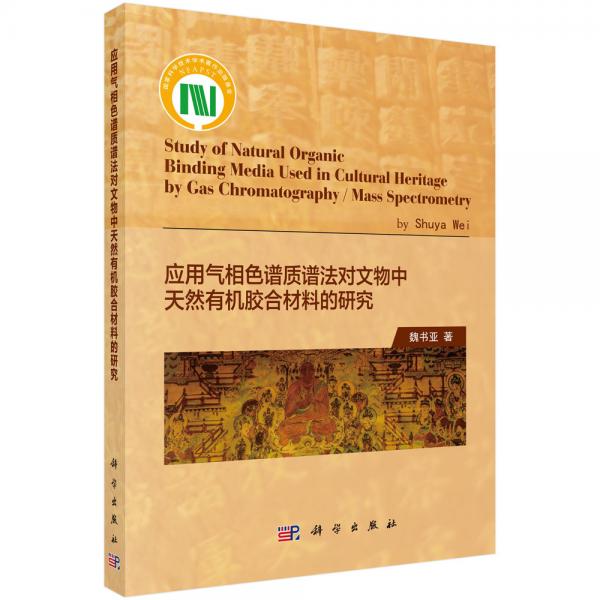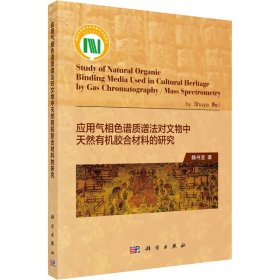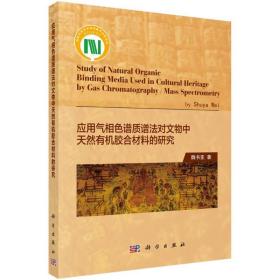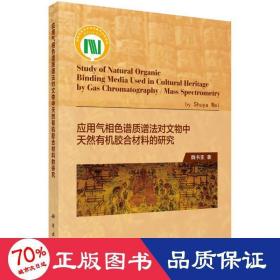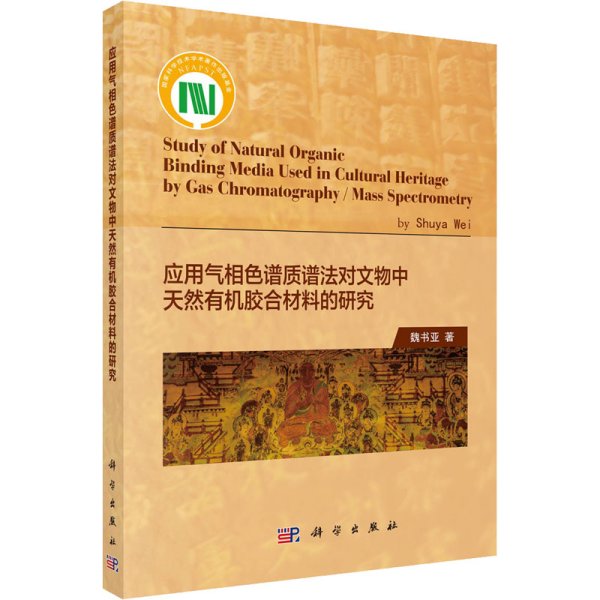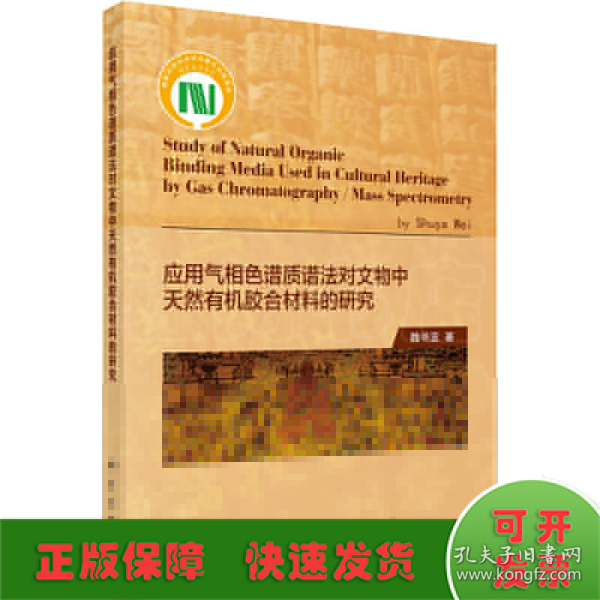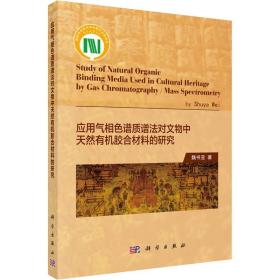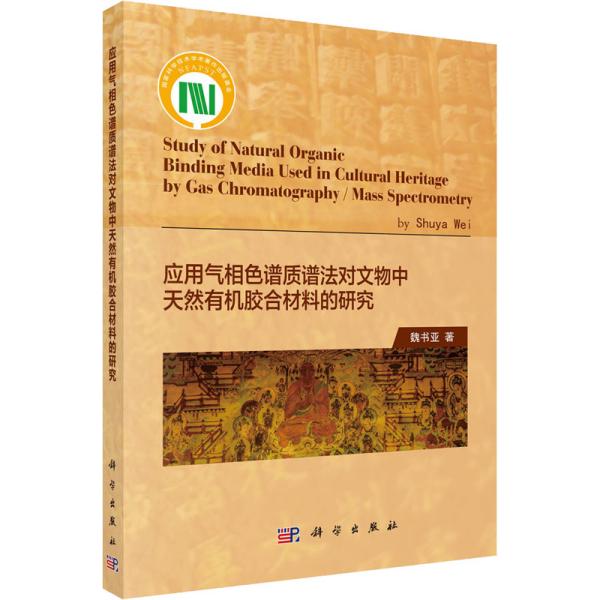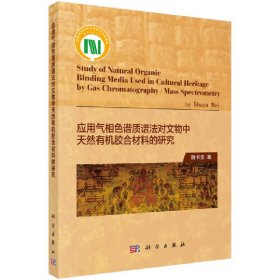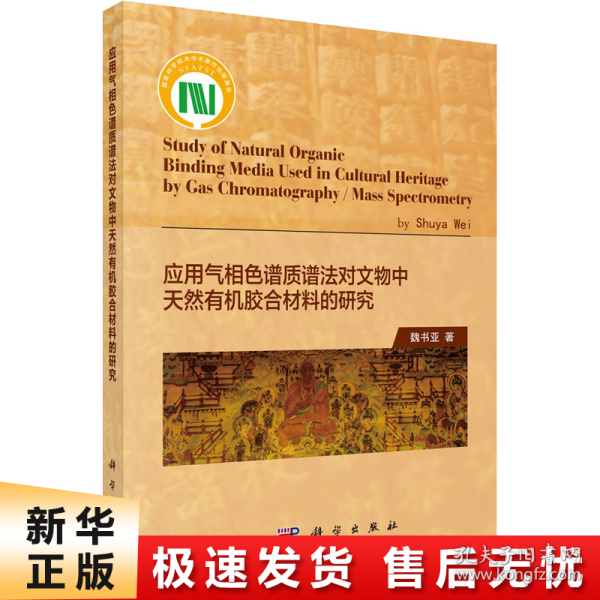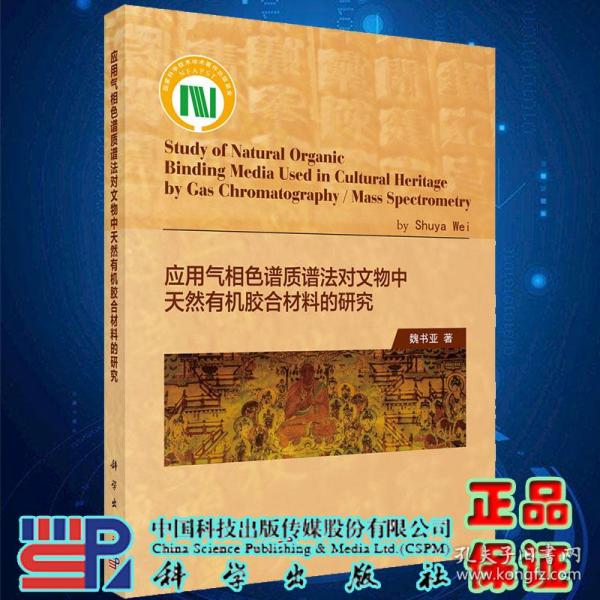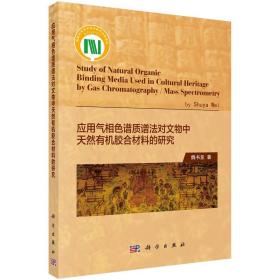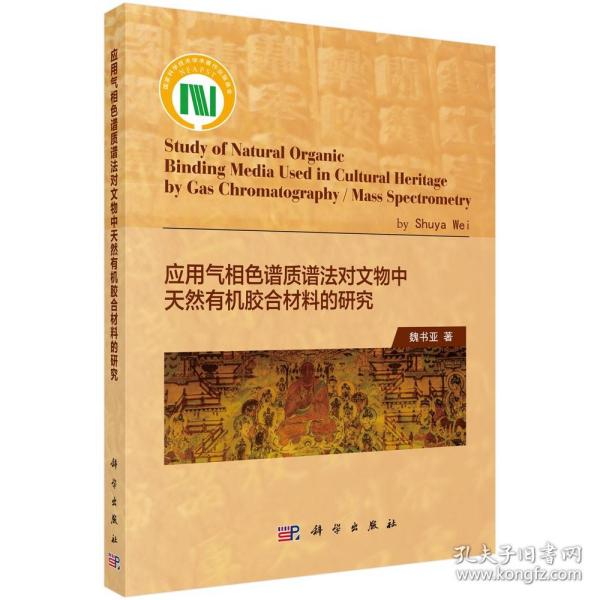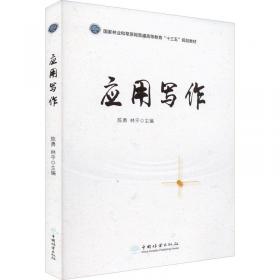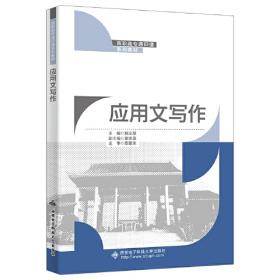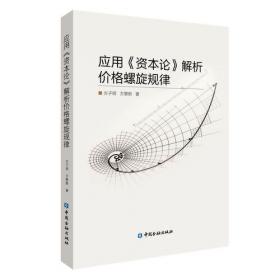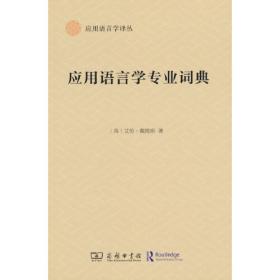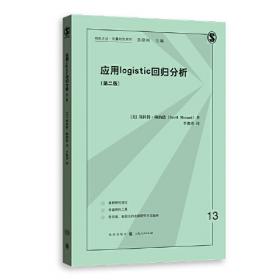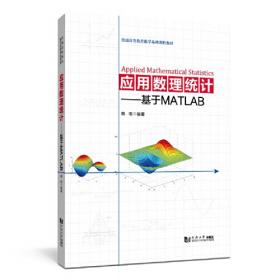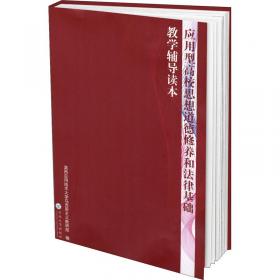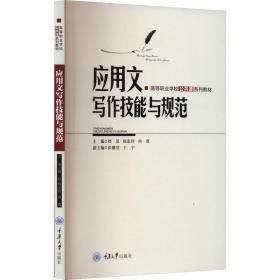应用气相色谱质谱法对文物中天然有机胶合材料的研究(英文版)
出版时间:
2021-07
版次:
1
ISBN:
9787030671554
定价:
128.00
装帧:
平装
开本:
16开
纸张:
胶版纸
页数:
319页
-
用于装饰目的的颜料可以追溯到4万年前,当时史前人类用绘画和素描装饰洞穴。古时候可用油、树脂、阿拉伯树胶、明胶、蛋清、蜂蜡等作为黏结剂。显然,这些有机材料在艺术史上起着非常重要的作用,因此,对其进行明确的识别和更好地了解其退化机制,对于保护文化遗产至关重要。本《应用气相色谱质谱法对文物中天然有机胶合材料的研究》研究了GC/MS和Py-GC/MS技术来鉴定艺术品中应用,并以案例形式介绍了其使用方法。 Contents
Chapter 1 Introduction to gas chromatography and mass spectrometry 1
1.1 Gas chromatography 1
1.2 Mass spectrometry 1
1.3 The Components and functions of GC/MS 3
1.3.1 Ion source 3
1.3.2 Mass analyzer 3
1.3.3 Detector 4
1.4 Pyrolysis with gas chromatography and mass spectrometry (Py-GC/MS) 4
References 5
Chapter 2 Overview about the natural organic binding media used in artworks 6
2.1 Introduction 6
2.2 Oils as binding media 9
2.2.1 The identification of oils 9
2.2.2 The drying and degradation of oils as binding media 11
2.3 Proteinaceous materials as binding media 13
2.3.1 Structure of protein and amino acids 13
2.3.2 Techniques for protein analysis 13
2.3.3 Drying and degradation processes of proteinaceous binding media 15
2.4 Resins used in artworks 16
2.4.1 Diterpenic resins 18
2.4.2 Triterpenoid resin 20
2.5 Waxes 22
2.5.1 Waxes from animal origins 22
2.5.2 Waxes from plant origins 23
2.5.3 Waxes from mineral origins 23
2.5.4 The analytical techniques used for analysis of waxes 24
2.5.5 The alteration of waxes during ageing 24
2.6 Aims of this research 25
References 25
Chapter 3 The influence of different pigments to the degradation and the identification of oils as binding media in artworks 31
3.1 Introduction 31
3.1.1 The use of oils as binding medium 31
3.1.2 The effects of pigments on drying and degradation of oil binding media 33
3.2 The experiment part 34
3.2.1 Apparatus 34
3.2.2 The mock-ups 34
3.2.3 The accelerating settings 36
3.2.4 Sample preparation procedure for GC/MS analysis 36
3.2.5 Calibration of the fatty acids 36
3.3 Results and discussions 38
3.3.1 Analysis results for fresh oils and artificially aged samples 38
3.3.2 Investigation of the P/S ratio of paint samples with different pigment during the ageing process 39
3.3.3 Marker compounds and indicative ranges for degradation products (Su/A, A/P) 42
3.3.4 O/P ratios in mock-ups with different pigments during ageing process 44
3.3.5 Evaluating the absolute amounts of detectable fatty acids in mock-ups during ageing process 45
3.3.6 Analysis results from poppy seed oil and walnut oil 48
3.4 Discussions 49
References 50
3.5 Case study 52
3.5.1 Characterization of Tang Dynasty lamp oil remains by using pyrolysis gas chromatography and mass spectrometry 52
3.5.2 The identification of binding agent used in late Shang Dynasty turquoise-inlayed bronze objects excavated in Anyang 66
Chapter 4 The study of proteinaceous materials used in artworks 81
4.1 Introduction 81
4.2 Chosen methodology for this study 83
4.3 Mock-ups and accelerated ageing procedures 84
4.4 Chemicals 85
4.5 Experimental part 85
4.5.1 Analytical equipment and conditions 85
4.5.2 Derivatization procedure by using ECF 86
4.6 Results and discussions 88
4.6.1 Characterisation of un-pigmented mock-ups by GC/MS 88
4.6.2 Characterisation of UV3 aged mock-ups of whole egg as binder with different pigments 91
4.6.3 Characterisation of the lipid fraction of proteinaceous materials 91
4.7 Conclusions 93
Reference 94
4.8 Case study 95
4.8.1 Scientific investigation of the paint and adhesive materials used in the Western Han Dynasty polychromy terracotta army, Qingzhou, China 95
4.8.2 Scientific investigation of the materials in a Chinese Ming Dynasty wall painting 108
4.8.3 Characterization of the materials used in Chinese ink sticks by pyrolysis- gas chromatography-mass spectrometry 124
4.8.4 Identification of the materials used in an Eastern Jin Chinese ink stick 136
Chapter 5 The identification of resins used in artworks and their chemical changes during ageing processes 147
5.1 Introduction 147
5.1.1 Mock-ups prepared in the Art History Museum, Vienna 148
5.1.2 Paint samples with mixed binding media 149
5.1.3 Samples from historic paintings 149
5.1.4 Artificial ageing experiments 149
5.2 Experiment part 149
5.2.1 Instrumental conditions 149
5.2.2 Sample preparation for GC/MS analysis 150
5.3 Results and discussions 150
5.3.1 Copal and sandarac resins 150
5.3.2 Baltic Amber 152
5.3.3 Mastic and dammar 154
5.3.4 Characterisation of samples with mixed binding media 156
5.3.5 Qualitative analysis: results and discussion 157
5.3.6 Investigating chemical changes of mixed binding media during ageing 161
5.3.7 Characterization of binding media from real paintings 164
5.4 Conclusions 167
References 168
5.5 Case study 169
5.5.1 The study of binding agents used to inlay turquoise onto bronze objects in Eastern Zhou Dynasty 169
5.5.2 The identification of the binding media in the Tang Dynasty Chinese wall painting by using Py-GC/MS and GC/MS techniques 177
Chapter 6 Study of the effects of pigments and ageing to the identification of waxes used in artworks 192
6.1 Introduction 192
6.2 Experimental part 1
-
内容简介:
用于装饰目的的颜料可以追溯到4万年前,当时史前人类用绘画和素描装饰洞穴。古时候可用油、树脂、阿拉伯树胶、明胶、蛋清、蜂蜡等作为黏结剂。显然,这些有机材料在艺术史上起着非常重要的作用,因此,对其进行明确的识别和更好地了解其退化机制,对于保护文化遗产至关重要。本《应用气相色谱质谱法对文物中天然有机胶合材料的研究》研究了GC/MS和Py-GC/MS技术来鉴定艺术品中应用,并以案例形式介绍了其使用方法。
-
目录:
Contents
Chapter 1 Introduction to gas chromatography and mass spectrometry 1
1.1 Gas chromatography 1
1.2 Mass spectrometry 1
1.3 The Components and functions of GC/MS 3
1.3.1 Ion source 3
1.3.2 Mass analyzer 3
1.3.3 Detector 4
1.4 Pyrolysis with gas chromatography and mass spectrometry (Py-GC/MS) 4
References 5
Chapter 2 Overview about the natural organic binding media used in artworks 6
2.1 Introduction 6
2.2 Oils as binding media 9
2.2.1 The identification of oils 9
2.2.2 The drying and degradation of oils as binding media 11
2.3 Proteinaceous materials as binding media 13
2.3.1 Structure of protein and amino acids 13
2.3.2 Techniques for protein analysis 13
2.3.3 Drying and degradation processes of proteinaceous binding media 15
2.4 Resins used in artworks 16
2.4.1 Diterpenic resins 18
2.4.2 Triterpenoid resin 20
2.5 Waxes 22
2.5.1 Waxes from animal origins 22
2.5.2 Waxes from plant origins 23
2.5.3 Waxes from mineral origins 23
2.5.4 The analytical techniques used for analysis of waxes 24
2.5.5 The alteration of waxes during ageing 24
2.6 Aims of this research 25
References 25
Chapter 3 The influence of different pigments to the degradation and the identification of oils as binding media in artworks 31
3.1 Introduction 31
3.1.1 The use of oils as binding medium 31
3.1.2 The effects of pigments on drying and degradation of oil binding media 33
3.2 The experiment part 34
3.2.1 Apparatus 34
3.2.2 The mock-ups 34
3.2.3 The accelerating settings 36
3.2.4 Sample preparation procedure for GC/MS analysis 36
3.2.5 Calibration of the fatty acids 36
3.3 Results and discussions 38
3.3.1 Analysis results for fresh oils and artificially aged samples 38
3.3.2 Investigation of the P/S ratio of paint samples with different pigment during the ageing process 39
3.3.3 Marker compounds and indicative ranges for degradation products (Su/A, A/P) 42
3.3.4 O/P ratios in mock-ups with different pigments during ageing process 44
3.3.5 Evaluating the absolute amounts of detectable fatty acids in mock-ups during ageing process 45
3.3.6 Analysis results from poppy seed oil and walnut oil 48
3.4 Discussions 49
References 50
3.5 Case study 52
3.5.1 Characterization of Tang Dynasty lamp oil remains by using pyrolysis gas chromatography and mass spectrometry 52
3.5.2 The identification of binding agent used in late Shang Dynasty turquoise-inlayed bronze objects excavated in Anyang 66
Chapter 4 The study of proteinaceous materials used in artworks 81
4.1 Introduction 81
4.2 Chosen methodology for this study 83
4.3 Mock-ups and accelerated ageing procedures 84
4.4 Chemicals 85
4.5 Experimental part 85
4.5.1 Analytical equipment and conditions 85
4.5.2 Derivatization procedure by using ECF 86
4.6 Results and discussions 88
4.6.1 Characterisation of un-pigmented mock-ups by GC/MS 88
4.6.2 Characterisation of UV3 aged mock-ups of whole egg as binder with different pigments 91
4.6.3 Characterisation of the lipid fraction of proteinaceous materials 91
4.7 Conclusions 93
Reference 94
4.8 Case study 95
4.8.1 Scientific investigation of the paint and adhesive materials used in the Western Han Dynasty polychromy terracotta army, Qingzhou, China 95
4.8.2 Scientific investigation of the materials in a Chinese Ming Dynasty wall painting 108
4.8.3 Characterization of the materials used in Chinese ink sticks by pyrolysis- gas chromatography-mass spectrometry 124
4.8.4 Identification of the materials used in an Eastern Jin Chinese ink stick 136
Chapter 5 The identification of resins used in artworks and their chemical changes during ageing processes 147
5.1 Introduction 147
5.1.1 Mock-ups prepared in the Art History Museum, Vienna 148
5.1.2 Paint samples with mixed binding media 149
5.1.3 Samples from historic paintings 149
5.1.4 Artificial ageing experiments 149
5.2 Experiment part 149
5.2.1 Instrumental conditions 149
5.2.2 Sample preparation for GC/MS analysis 150
5.3 Results and discussions 150
5.3.1 Copal and sandarac resins 150
5.3.2 Baltic Amber 152
5.3.3 Mastic and dammar 154
5.3.4 Characterisation of samples with mixed binding media 156
5.3.5 Qualitative analysis: results and discussion 157
5.3.6 Investigating chemical changes of mixed binding media during ageing 161
5.3.7 Characterization of binding media from real paintings 164
5.4 Conclusions 167
References 168
5.5 Case study 169
5.5.1 The study of binding agents used to inlay turquoise onto bronze objects in Eastern Zhou Dynasty 169
5.5.2 The identification of the binding media in the Tang Dynasty Chinese wall painting by using Py-GC/MS and GC/MS techniques 177
Chapter 6 Study of the effects of pigments and ageing to the identification of waxes used in artworks 192
6.1 Introduction 192
6.2 Experimental part 1
查看详情
-
全新
山东省泰安市
平均发货9小时
成功完成率96.99%
-
全新
北京市通州区
平均发货10小时
成功完成率88.5%
-
全新
江苏省无锡市
平均发货18小时
成功完成率87.07%
-
全新
河北省保定市
平均发货24小时
成功完成率90.38%
-
全新
河北省保定市
平均发货24小时
成功完成率90.38%
-
全新
河北省保定市
平均发货15小时
成功完成率91.13%
-
全新
湖北省武汉市
平均发货15小时
成功完成率94.61%
-
全新
北京市丰台区
平均发货23小时
成功完成率88.57%
-
全新
江苏省南京市
平均发货8小时
成功完成率96.65%
-
全新
江苏省南京市
平均发货16小时
成功完成率82.85%
-
全新
北京市西城区
平均发货29小时
成功完成率90.38%
-
全新
四川省成都市
平均发货9小时
成功完成率97.01%
-
全新
北京市朝阳区
平均发货9小时
成功完成率96.79%
-
全新
江苏省无锡市
平均发货18小时
成功完成率94.47%
-
全新
江苏省无锡市
平均发货18小时
成功完成率92.29%
-
全新
江苏省无锡市
平均发货8小时
成功完成率95.83%
-
全新
湖南省长沙市
平均发货42小时
成功完成率83.44%
-
全新
河北省保定市
平均发货3小时
成功完成率93.26%
-
全新
江苏省南京市
平均发货16小时
成功完成率82.85%
-
全新
江苏省南京市
平均发货20小时
成功完成率47.5%
-
全新
河北省保定市
平均发货31小时
成功完成率78.21%
-
全新
北京市东城区
平均发货30小时
成功完成率83.91%
-
全新
河北省保定市
平均发货26小时
成功完成率87.73%
-
全新
四川省成都市
平均发货17小时
成功完成率80.06%
-
全新
广东省广州市
平均发货20小时
成功完成率86.47%
-
全新
广东省广州市
平均发货7小时
成功完成率89.93%
-
全新
广东省广州市
平均发货21小时
成功完成率80.14%
-
全新
河北省保定市
平均发货14小时
成功完成率82.59%
-
全新
北京市通州区
平均发货53小时
成功完成率72.14%
-
全新
浙江省杭州市
平均发货13小时
成功完成率76.08%
-
全新
-
应用气相色谱质谱法对文物中天然有机胶合材料的研究(英文版)
按需印刷 商品标题推荐语带有“按需印刷”字样的商品,全新正版出版社直发。为先下单后生产的绝版书订制服务,生产周期一般为1-3个工作日,按需印刷的 非质量问题,不支持退货的哦,如急用请谨慎下单。按需印刷的书籍均为平装书籍哦,请知悉/:^_^
全新
北京市通州区
平均发货71小时
成功完成率80.61%
-
全新
北京市通州区
平均发货71小时
成功完成率80.61%
-
全新
河北省保定市
平均发货29小时
成功完成率77.68%
-
全新
北京市丰台区
平均发货11小时
成功完成率84.31%
-
全新
四川省成都市
平均发货10小时
成功完成率94.08%
-
全新
江苏省无锡市
平均发货7小时
成功完成率89.17%
-
全新
河北省保定市
平均发货9小时
成功完成率80.23%
-
全新
北京市通州区
平均发货38小时
成功完成率51.35%
-
全新
河南省新乡市
平均发货22小时
成功完成率72.57%
-
全新
河北省廊坊市
平均发货52小时
成功完成率82.54%
-
全新
河北省保定市
平均发货4小时
成功完成率84.7%
-
全新
河北省保定市
平均发货17小时
成功完成率69.3%
-
全新
河北省保定市
平均发货3小时
成功完成率86.39%
-
全新
北京市通州区
平均发货47小时
成功完成率68.89%
-
全新
北京市通州区
平均发货59小时
成功完成率80.3%
-
全新
河北省廊坊市
平均发货29小时
成功完成率60.53%
-
全新
河北省保定市
平均发货9小时
成功完成率85.03%
-
全新
-
全新
江西省吉安市
平均发货4天内
成功完成率84.08%

 占位居中
占位居中

